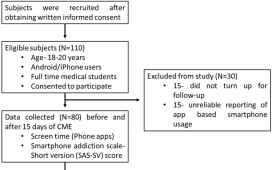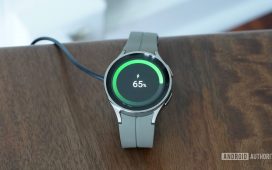HMD Fusion
The HMD Fusion brings the chance to add new functionality through smart cases., and you can download the plans to make your own. Is that enough to stand out in a crowded market?
I’ve spent time this month to find out.
The HMD Fusion As A Phone
Priced at £229 in the UK, the HMD Fusion is a competent smartphone that delivers what the market expects at this price point. It’s equipped with Qualcomm’s Snapdragon 4 Gen 2 chipset backed up by 6 GB of memory. You have 128 GB of internal storage, while support for SD Cards means you can comfortably add 1TB if you feel the need for more.
Your regular day-to-day mix of social media apps, web browsing, and PDA functionality can all be run on the Fusion, but don’t expect anything more advanced to run smoothly.
The screen resolution is 720p, and the display technology is decidedly average; colors quickly wash out under medium lighting, and sunlight can have a noticeable negative impact on the screen’s clarity.
HMD Fusion
Software-wise, the Fusion will receive two Android version updates and three years of security updates. However, as it launches with Android 14, your two versions will only take you up to Android 16, presumably in early 2026.
If the Fusion package were just the phone, it would be easily lost in a sea of smartphones at this price. Yet, there is one design decision HMD hopes will help the Fusion stand out. Not only can you purchase additional cases that extend the functionality of the phone, but you can also download the plans and build one for yourself or others.
The HMD Fusion And Its Smart Cases
HMD has christened these accessories as Smart Fusion Outfits.
Six electrical contacts offering power, data, and control lines are tucked away on the back of the Fusion. Pogo pins inside a case can make contact, and from that point on, the imagination of the case designer can take flight.
HMD Fusion
HMD demonstrated a case with an integrated ring light (the Flashy Outfit), a case with improved protection rated to IP68 (the Rugged Outfit), and analogue sticks in a control pad format (the Gaming Outfit). You also have various colors of Casual Outfit, including the transparent case that comes in the Fusion’s retail packaging.
Alongside the review unit of the Fusion, HMD also supplied a Flashy Outfit. This is a camera ring that lights up the subject of any picture or video. Power is drawn through the pins and into an LED ring that sits around the primary camera – it’s a similar setup to many webcams with a ring light. In addition, it flips up to sit across the top of the phone to help light selfie shots on the forward-facing camera.
HMD Fusion
There’s not much to go wrong here; it’s a fill light for your camera and does what it needs to do. It’s practical for photography and demonstrating what an Outfit can do.
HMD Fusion
I would note that it’s a relatively tight fit around the Fusion, as is the default ‘does nothing’ case that comes in the retail packaging, so it feels like quite an effort to switch them over; that’s not something I would want to do often.
The HMD Fusion’s Historical Challenge
The idea of modular attachments is not a new one in the smartphone space. The recent Moto Mods on the Moto Z handsets used magnetic attachment points on the rear of the smartphone with a series of pogo pin points to offer the power and data lines needed.
I can remember the fanfare in 2012 with the launch of the Nokia Lumia 820 with its replaceable shells and the release of the associated CAD files for 3D printing new shells.
Neither of these gathered much commercial success. They lacked both the volume of handsets required to make a significant investment by peripheral manufacturers and the implicit support of the manufacturer in terms of ongoing software support and open access to the platform.
HMD Fusion
HMD offers the necessary production files and specifications directly from the website so individuals can make their own accessories. In theory, that should allow anything to be built into the Fusion. But without a significant install base, this is going to stay in the realm of the hobbyist makers and creatives, at least on the consumer side of things.
Are Custom Cases Enough?
The HMD Fusion sits awkwardly between two ideas. The first is that it has the tinkerers, the makers, and the creatives in mind and offers them the ability to build their own cases that interface seamlessly with their smartphones. Yet those same tinkerers are the sort of consumers who would not normally consider a smartphone with an all-plastic construction, a limited 720p display, two years of updates and, crucially, a locked bootloader.
I love the idea of the outfits, but manufacturing at scale requires a user base, and I don’t think even HMD would be under the illusion that the Fusion is going to be up there with the Galaxys, Pixels and iPhones of the world.
This leaves me wondering where the audience is for the Fusion. Perhaps there is space for it in the enterprise market—bulk B2B sales and outfits, including barcode scanners or proprietary scanning tech, could be a potential avenue. That’s a space in which the HMD Fusion could excel. It’s not quite the modular phone many want, but it has a modular component that could deliver for specific use cases.
HMD Fusion
I’m glad that HMD has taken a risk on the Fusion. I’m sure that a target market was identified during the design process, and it reaches that market. I think the consumer market is simply a cherry on top of what I suspect is a more enterprise-focused approach.
Disclaimer: HMD supplied an HMD Fusion and Flashy Outfit for review purposes.











